Chevrolet Equinox Service Manual: Vibration Theory and Terminology
Vibration Theory
The designs and engineering requirements of vehicles haveundergone drastic changes over the last several years.
Vehicles are stiffer and provide more isolation from roadinput than they did previously. The structures of today's stiffervehicles are less susceptible to many of the vibrations which couldbe present in vehicles of earlier designs, however, vibrations canstill be detected in a more modern vehicle if a transfer path iscreated between a rotating component and the body of thevehicle.
There are not as many points of isolation from the road inmany vehicles today. If a component produces a strong enoughvibration, it may overcome the existing isolation and the componentneeds to be repaired or replaced.
The presence/absence of unwanted noise and vibration islinked to the customer's perception of the overall quality of thevehicle.
Vibration is the repetitive motion of an object, back andforth, or up and down. The following components cause most vehiclevibrations:
A rotating componentThe engine combustion process firing impulsesRotating components will cause vibrations when excessiveimbalance or runout is present. During vibration diagnosis, theamount of allowable imbalance or runout should be considered aTOLERANCE and not a SPECIFICATION. In other words, the lessimbalance or runout the better.
Rotating components will cause a vibration concern when theynot properly isolated from the passenger compartment: Engine firingpulses can be detected as a vibration if a motor mount iscollapsed.
A vibrating component operates at a consistent rate (km/h,mph, or RPM). Measure the rate of vibration in question. When therate/speed is determined, relate the vibration to a component thatoperates at an equal rate/speed in order to pinpoint the source.Vibrations also tend to transmit through the body structure toother components. Therefore, just because the seat vibrates doesnot mean the source of vibration is in the seat.
Vibrations consist of the following three elements:
The source – the cause of the vibrationThe transfer path – the path the vibration travelsthrough the vehicleThe responder – the component where the vibrationis felt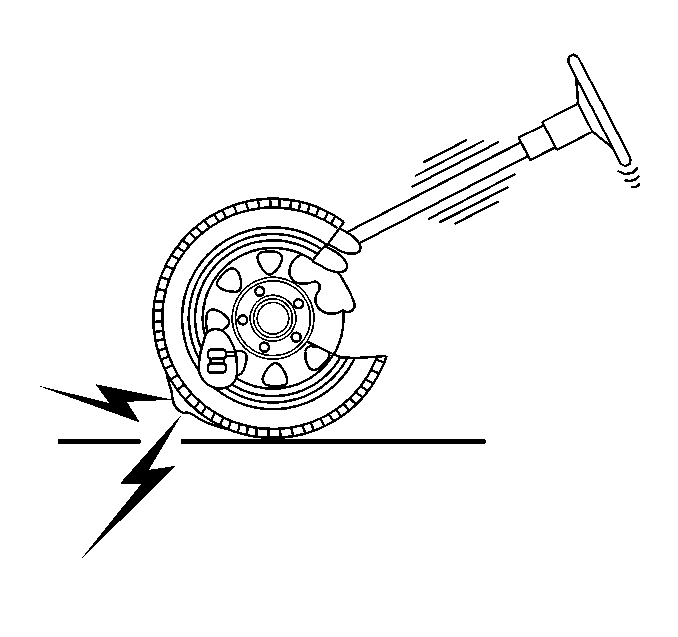
In the preceding picture, the source is the unbalanced tire.The transfer path is the route the vibrations travels through thevehicle's suspension system into the steering column. The responderis the steering wheel, which the customer reports as vibrating.Eliminating any one of these three elements will usually correctthe condition. Decide, from the gathered information, which elementmakes the most sense to repair. Adding a brace to the steeringcolumn may keep the steering wheel from vibrating, but adding abrace is not a practical solution. The most direct and effectiverepair would be to properly balance the tire.
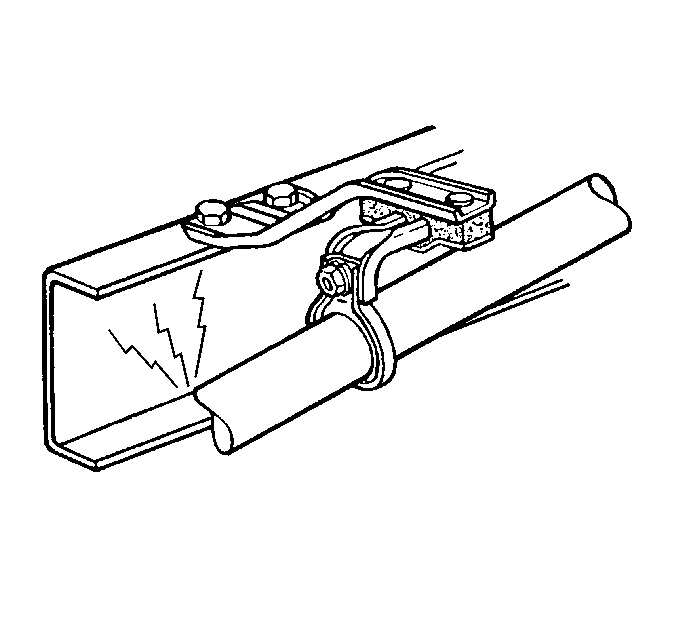
Vibration can also produce noise. As an example, consider avehicle that has an exhaust pipe grounded to the frame. The sourceof the vibration is the engine firing impulses traveling throughthe exhaust. The transfer path is a grounded or bound-up exhausthanger. The responder is the frame. The floor panel vibrates,acting as a large speaker, which produces noise. The best repairwould be to eliminate the transfer path. Aligning the exhaustsystem and correcting the grounded condition at the frame wouldeliminate the transfer path.
Basic Vibration TerminologyThe following are the 2 primary components of vibrationdiagnosis:
The physical properties of objectsThe object's properties of conducting mechanicalenergyThe repetitive up and down or back and forth movement of acomponent cause most customer vibration complaints. The followingare the common components that vibrate:
The steering wheelThe seat cushionThe frameThe IPVibration diagnosis involves the following simpleoutline:
Measure the repetitive motion and assign a value to themeasurement in cycles per second or cycles per minute.Relate the frequency back on terms of the rotational speed ofa component that is operating at the same rate or speed.Inspect and test the components for conditions that causevibration.For example, performing the following steps will helpdemonstrate the vibration theory:
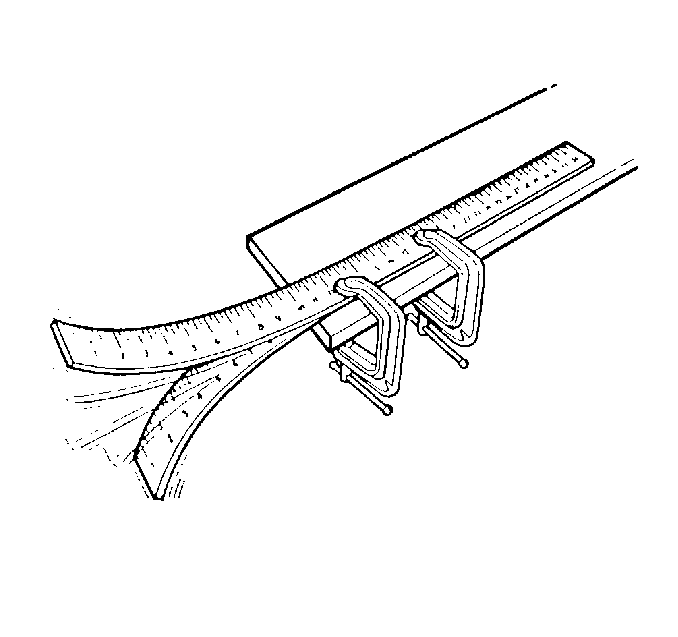
Clamp a yardstick to the edge of a table, leaving about50-cm (20-in) hanging over the edge of thetable.Pull down on the edge of the stick and release whileobserving the movement of the stick.
The motion of the stick occurs in repetitive cycles. Thecycle begins at midpoint, continues through the lowest extreme oftravel, then back past the midpoint, through the upper extreme oftravel, and back to the midpoint where the cycle beginsagain.
The cycle occurs over and over again at the same rate, orfrequency. In this case, about 10-cycles in one second.If we measure the frequency to reflect the number of completecycles that the yardstick made in one minute, the measure would be10-cycles x 60-seconds =600-cycles per minute (cpm).
We have also found a specific amount of motion, or amplitude,in the total travel of the yardstick from the very top to the verybottom. Redo the experiment as follows:
Reclamp the yardstick to the edge of a table, leaving about25-cm (10-in) hanging over the edge of thetable.Pull down on the edge of the stick and release whileobserving the movement of the stick.The stick vibrates at a much faster frequency:30-cycles per second (1,800-cycles perminute).
Cycle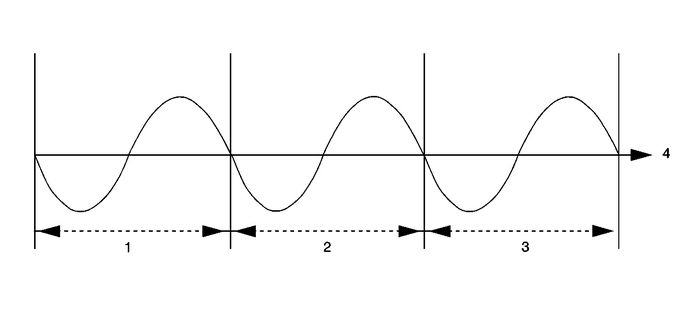
| (1) | 1st Cycle |
| (2) | 2nd Cycle |
| (3) | 3rd Cycle |
| (4) | Time |
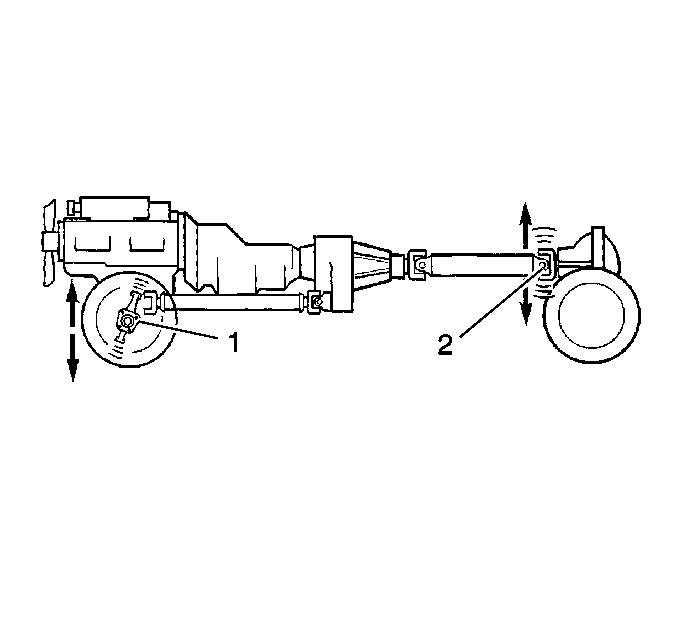
| (1) | Spindle |
| (2) | Pinion Nose |
The word cycle comes from the same root as the word circle. Acircle begins and ends at the same point, as thus, so does a cycle.All vibrations consist of repetitive cycles.
Frequency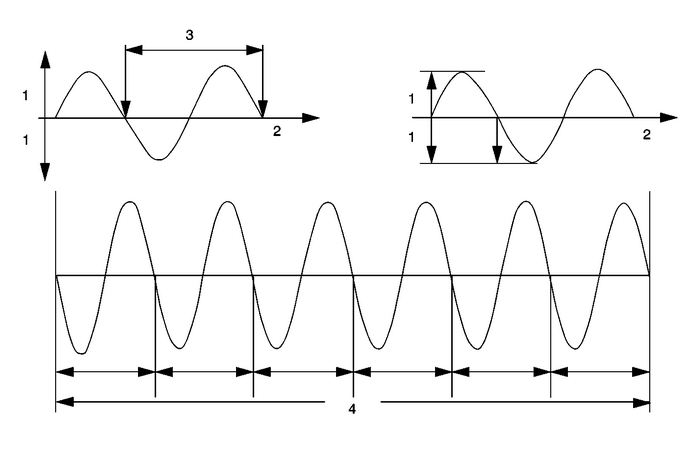
| (1) | Amplitude |
| (2) | Reference |
| (3) | Time in Seconds |
| (4) | 1-Second |
Frequency is defined as the rate at which an event occursduring a given period of time. With a vibration, the event is acycle, and the period of time is 1 second. Thus, frequency isexpressed in cycles per second.
The proper term for cycles per seconds is Hertz (Hz). This isthe most common way to measure frequency. Multiply the Hertz by 60to get the cycles or revolutions per minute (RPM).
Amplitude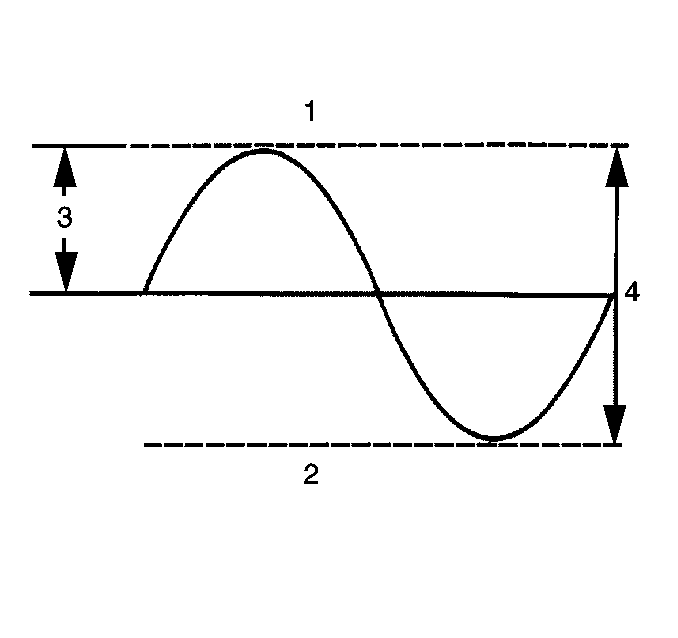
| (1) | Maximum |
| (2) | Minimum |
| (3) | Zero-to-Peak Amplitude |
| (4) | Peak-to-Peak Amplitude |
Amplitude is the maximum value of a periodically varyingquantity. Used in vibration diagnostics, we are referring it to themagnitude of the disturbance. A severe disturbance would have ahigh amplitude; a minor disturbance would have a lowamplitude.
Amplitude is measured by the amount of actual movement, orthe displacement. For example, consider the vibration caused by anout-of-balance wheel at 80-km/h (50-mph) asopposed to 40-km/h (25-mph). As the speedincreases, the amplitude increases.
Free VibrationFree vibration is the continued vibration in the absence ofany outside force. In the yardstick example, the yardstickcontinued to vibrate even after the end was released.
Forced VibrationForced vibration is when an object is vibrating continuouslyas a result of an outside force.
Centrifugal Force Due to an Imbalance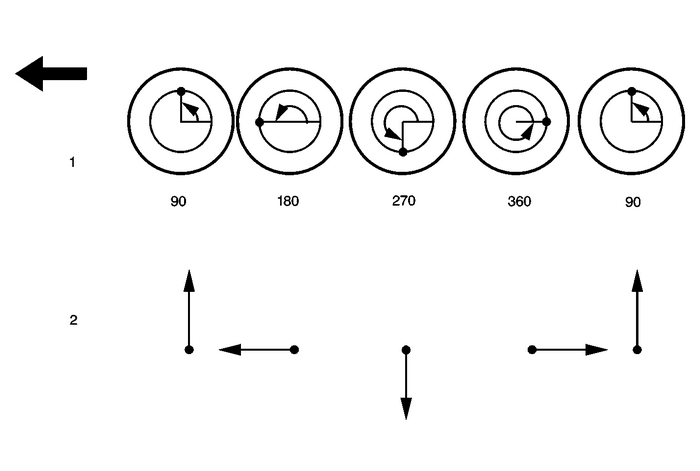
| (1) | Location of Imbalance(Degrees) |
| (2) | Centrifugal Force Acting onSpindle |
A spinning object with an imbalance generates a centrifugalforce. Performing the following steps will help to demonstratecentrifugal force:
Tie a nut to a string.Hold the string. The nut hangs vertically due togravity.Spin the string. The nut will spin in a circle.Centrifugal force is trying to make the nut fly outward,causing the pull you feel on your hand. An unbalanced tire followsthe same example. The nut is the imbalance in the tire. The stringis the tire, wheel, and suspension assembly. As the vehicle speedincreases, the disturbing force of the unbalanced tire can be feltin the steering wheel, the seat, and the floor. This disturbancewill be repetitive (Hz) and the amplitude will increase. At higherspeeds, both the frequency and the amplitude will increase. As thetire revolves, the imbalance, or the centrifugal force, willalternately lift the tire up and force the tire downward, alongwith the spindle, once for each revolution of the tire.
Natural or Resonant Frequency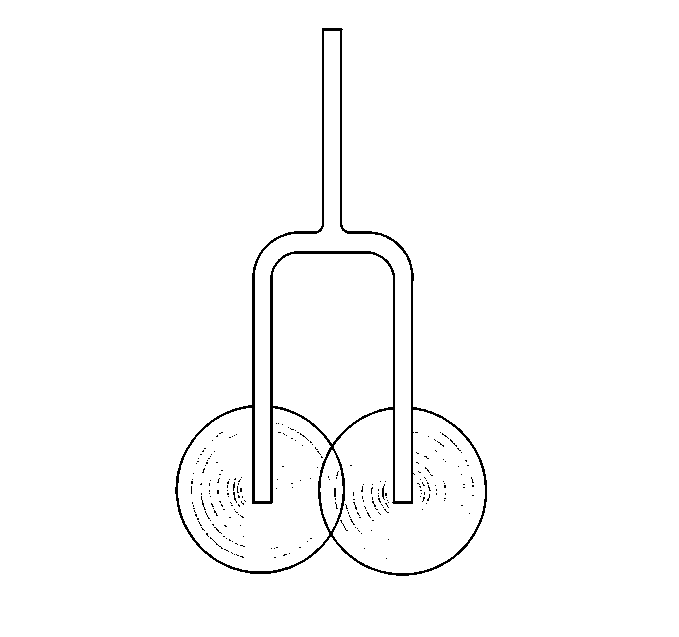
The natural frequency is the frequency at which an objecttends to vibrate. Bells, guitar strings, and tuning forks are allexamples of objects that tend to vibrate at specific frequencieswhen excited by an external force.
Suspension systems, and even engines within the mounts, havea tendency to vibrate at certain frequencies. This is why somevibration complaints occur only at specific vehicle speeds orengine RPM.
The stiffness and the natural frequency of a material have arelationship. Generally, the stiffer the material, the higher thenatural frequency. The opposite is also true. The softer amaterial, the lower the natural frequency. Conversely, the greaterthe mass, the lower the natural frequency.
Resonance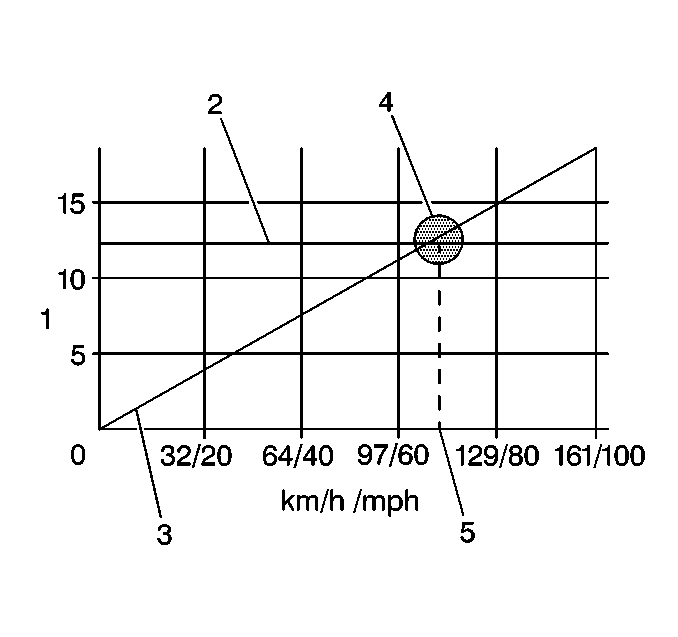
| (1) | Frequency-–-cps |
| (2) | Suspension Frequency |
| (3) | Unbalanced Excitation |
| (4) | Point of Resonance |
| (5) | Problem Speed |
All objects have natural frequencies. The natural frequencyof a typical automotive front suspension is in the10–15-Hz range. This natural frequency is theresult of the suspension design. The suspension's natural frequencyis the same at all vehicle speeds. As the tire speed increasesalong with the vehicle speed, the disturbance created by the tireincreases in frequency. Eventually, the frequency of the unbalancedtire will intersect with the natural frequency of the suspension.This causes the suspension to vibrate. The intersecting point iscalled the resonance.
The amplitude of a vibration will be greatest at the point ofresonance. While the vibration may be felt above and below theproblem speed, the vibration may be felt the most at the point ofresonance.
Damping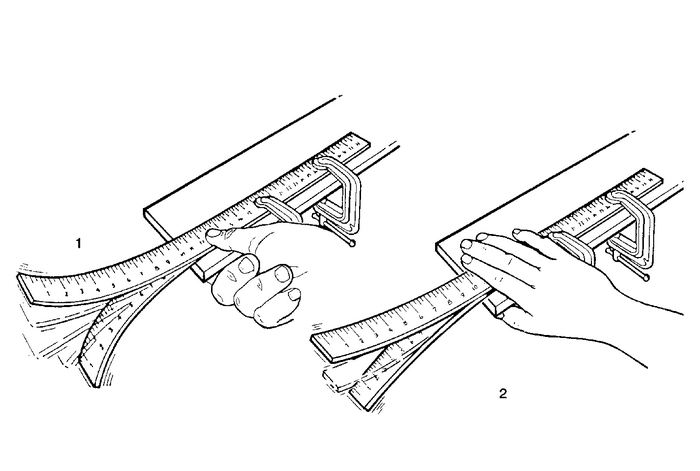
| (1) | Low Damping |
| (2) | High Damping |
Damping is the ability of an object or material to dissipateor absorb vibration. The automotive shock absorber is a goodexample. The function of the shock absorber is to absorb or dampenthe oscillations of the suspension system.
Beating (Phasing)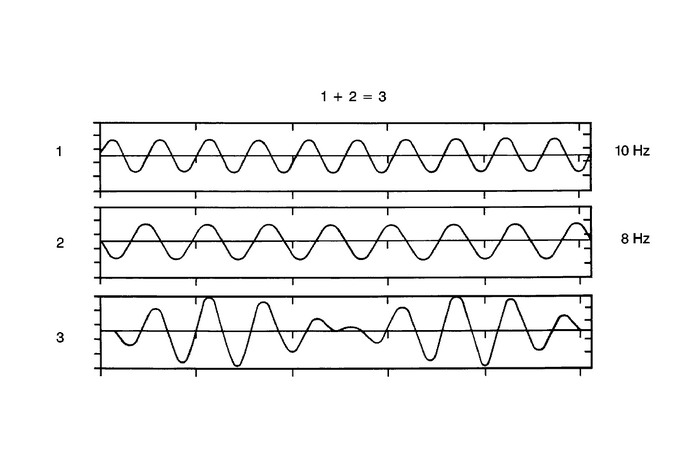
Two separate disturbances that are relatively close togetherin frequency will lead to a condition called beating, or phasing. Abeating vibration condition will increase in intensity or amplitudein a repetitive fashion as the vehicle travels at a steady speed.This beating vibration can produce the familiar droning noise heardin some vehicles.
Beating occurs when 2 vibrating forces are adding to eachother's amplitude. However, 2 vibrating forces can also subtractfrom each other's amplitude. The adding and subtracting ofamplitudes in similar frequencies is called beating. In many cases,eliminating either one of the disturbances can correct thecondition.
OrderOrder refers to how many times an event occurs during 1revolution of a rotating component.
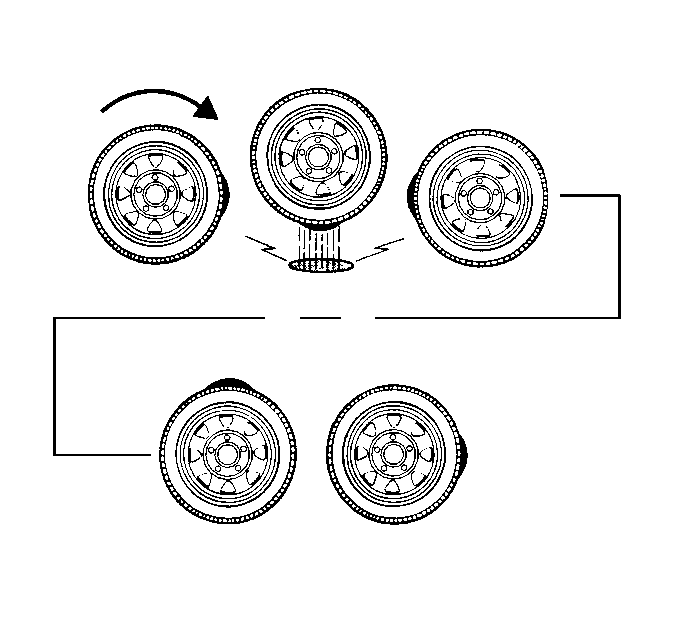
For example, a tire with 1 high spot would create adisturbance once for every revolution of the tire. This is calledfirst-order vibration.
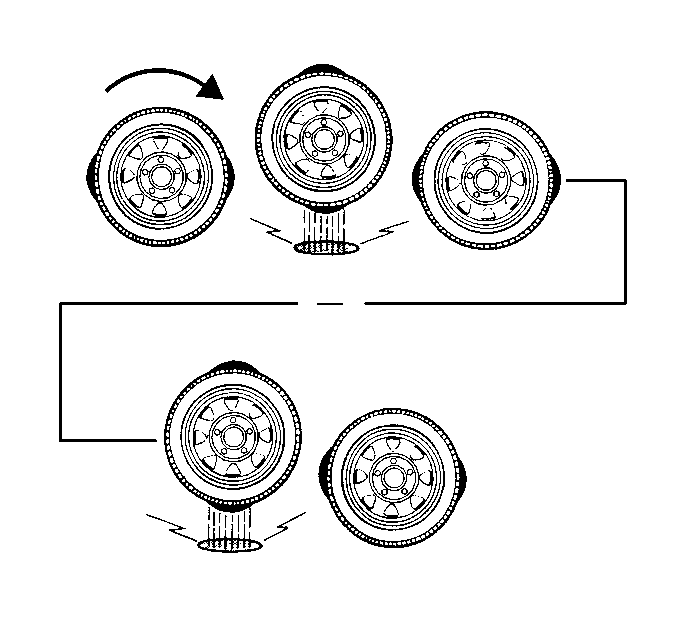
An oval-shaped tire with 2 high spots would create adisturbance twice for every revolution. This is called second-ordervibration. Three high spots would be third-order, and so forth. Twofirst-order vibrations may add or subtract from the overallamplitude of the disturbance, but that is all. Two first-ordervibrations do not equal a second-order. Due to centrifugal force,an unbalanced component will always create at least a first-ordervibration.
 E85 or FlexFuel
E85 or FlexFuel
Vehicles with a yellow fuel cap can use either unleaded gasoline or ethanol fuel containingup to 85% ethanol (E85). SeeE85 or FlexFuel. For all other vehicles, use only the unleaded gasoline described ...
 Fuel Pipe Fitting Warning
Fuel Pipe Fitting Warning
Warning:Always apply a few drops of clean engine oil to the male pipeends before connecting the fuel pipe fittings. This will ensureproper reconnection and prevent a possible fuel leak. Alwaysreplace ...
Other materials:
Transfer Case Brace Replacement Automatic Transmission Unit
Transfer Case Brace ReplacementCalloutComponent NamePreliminary ProceduresRaise the vehicle. Refer toLifting and Jacking the Vehicle.Remove the right wheel drive shaft. Refer toFront Wheel Drive Shaft Replacement.1Transfer Case Brace Bolt (Qty:-2)Caution:Refer toFastener Caution.Tip:Tighten the fast ...
